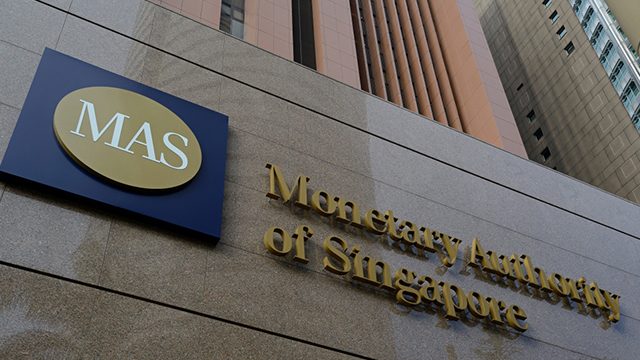SUMMARY
This is AI generated summarization, which may have errors. For context, always refer to the full article.

SINGAPORE – Singapore eased monetary policy for the first time in more than 3 years on Monday, October 14, as the United States-China trade war bites, while the export-reliant economy narrowly avoided recession in the 3rd quarter.
The financial hub’s central bank joins others around the world, from Europe to the US, in loosening policy as fears mount of a global economic slowdown.
The city-state has traditionally been the first among Asia’s export-driven economies to be affected during a downturn, making it a closely watched barometer of demand for goods and services for the rest of the region.
And it has been hard hit in recent months, with growth rates and exports plummeting, as US-China tensions upend the global trading system.
The Monetary Authority of Singapore (MAS) said it will “reduce slightly” the slope of the band at which its currency is allowed to move, effectively allowing for a weaker dollar, as had been expected.
Instead of using interest rates, Singapore manages monetary policy by letting the local dollar rise or fall against a currency basket of its main trading partners.
“In the last 6 months, the drag on GDP (gross domestic product) growth exerted by the manufacturing sector has intensified, reflecting the ongoing downturn in the global electronics cycle as well as the pullback in investment spending, caused in part by the uncertainty in US-China relations,” MAS said.
Preliminary GDP data released at the same time showed Singapore’s economy narrowly avoided tipping into a technical recession, defined as two consecutive quarters of contraction.
It expanded 0.6% in the 3 months to September on a quarterly basis, bouncing back from a shock 2.7% 2nd-quarter contraction. The economy grew 0.1% on a yearly basis.
The manufacturing sector, a pillar of the trade-dependent economy, shrank 3.5%, following a 3.3% contraction the previous quarter.
Capital Economics forecast the economy will likely grow by just 0.5% this year. The city-state last slipped into recession in the aftermath of the global financial crisis in 2008.
Song Seng Wun, a regional economist with CIMB Private Banking, said with the economy having narrowly avoided recession, MAS must have felt that a slight tweaking of policy was enough.
The central bank will be hoping that “maybe growth in 2020 might be better than 2019,” Song told Agence France-Presse.
“Perhaps the US-China phase-one deal adds to a little bit of hope for 2020,” he said.
President Donald Trump announced Friday, October 11, that US and Chinese negotiators had reached a partial trade deal, bolstering hopes that the world’s two biggest economies may be on the path to resolving their long-running row. – Rappler.com
Add a comment
How does this make you feel?
There are no comments yet. Add your comment to start the conversation.